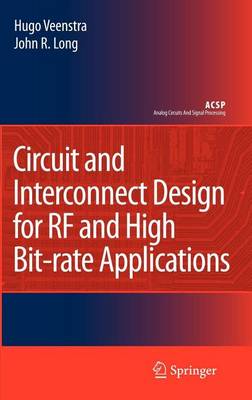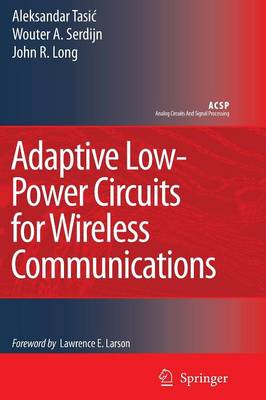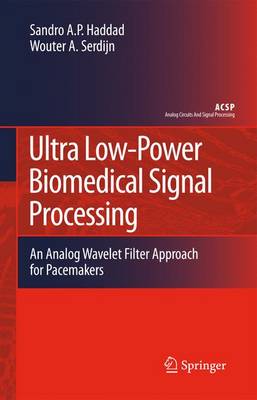Analog Circuits and Signal Processing
4 total works
Circuit and Interconnect Design for RF and High Bit-Rate Applications
by Hugo Veenstra and John R Long
Realizing maximum performance from high bit-rate and RF circuits requires close attention to IC technology, circuit-to-circuit interconnections (i.e., the 'interconnect') and circuit design. This detailed book covers each of these topics from theory to practice, with sufficient detail to help you produce circuits that are 'first-time right'. Many practical circuit examples are included to demonstrate the interplay between technology, interconnect and circuit design.
Adaptive Low-Power Circuits for Wireless Communications
by Aleksandar Tasic, Wouter A. Serdijn, and John R Long
With a billion – soon to be two billion - cellular telephones in circulation, the next challenge is to make cellular radio functions adaptive to their environment. This book provides a comprehensive theoretical framework for optimizing performance, discussing joint optimization of Noise Figure and Input Intercept Point in receiver systems. Also examined are original techniques to optimize voltage controlled oscillators and low-noise amplifiers, minimizing power consumption while maintaining adequate system performance.
Ultra Low-Power Biomedical Signal Processing
by Sandro Augusto Pavlik Haddad and Wouter A. Serdijn
Often WT systems employ the discrete wavelet transform, implemented on a digital signal processor. However, in ultra low-power applications such as biomedical implantable devices, it is not suitable to implement the WT by means of digital circuitry due to the relatively high power consumption associated with the required A/D converter. Low-power analog realization of the wavelet transform enables its application in vivo, e.g. in pacemakers, where the wavelet transform provides a means to extremely reliable cardiac signal detection.
In Ultra Low-Power Biomedical Signal Processing we present a novel method for implementing signal processing based on WT in an analog way. The methodology presented focuses on the development of ultra low-power analog integrated circuits that implement the required signal processing, taking into account the limitations imposed by an implantable device.
Ultra-Wideband Transceiver Circuits and Systems
by Sumit Bagga, Wouter A. Serdijn, and John R Long
Wideband radio technology is not a new concept in the field of RF technology. Decades of research in the area of wideband systems has lead us to new possibilities in the design of low-power, low complexity radios. Ultra-wideband is a direct offspring, which takes the initiative a step further by presenting novel wideband techniques for RF technology.
The US FCC position on UWB for commercial usage changed after agreeing to adopt the First Report and Order on February 14, 2002. Unlicensing several gigahertz of frequency spectrum allowed companies to manufacture and market products incorporating UWB technology. At a certain moment, the potential benefits of UWB were outweighed, when existing wireless (narrowband) regulators perceived UWB as a disruptive influence. This, however, did not stop most countries from accommodating and recognizing the true nature of UWB.
In brief, the authors have only scratched the surface when it comes to understanding the true potential of UWB technology. The development stage is in its infancy and will necessitate a substantial amount of research to meet industrial specifications. Short-range communications, low-power and low/moderate data rate throughput are the most attractive aspects and promises of UWB technology. For this very reason, applications, such as wireless sensor networks (WSN) are most noticeable.



